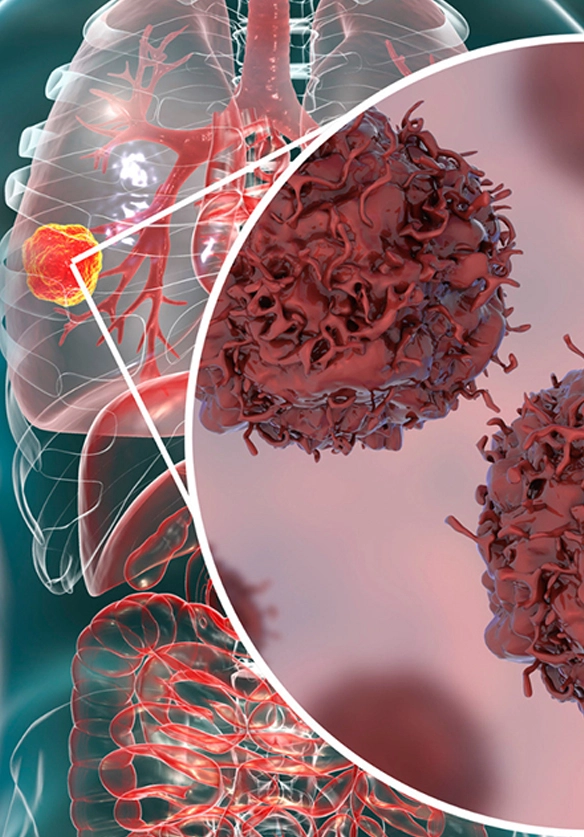Welcome to our comprehensive guide on lung cancer. We understand that navigating a lung cancer diagnosis can be overwhelming, which is why we are dedicated to providing the best lung cancer treatment options available. As a leading facility specializing in oncology, we offer cutting-edge therapies and compassionate support tailored to each individual's unique needs. Whether you're seeking lung cancer treatment in Mumbai or exploring the most effective approaches worldwide, our multidisciplinary team is committed to delivering optimal outcomes and enhancing quality of life. Discover the difference in care and explore the possibilities for the best lung cancer treatment as we strive to be at the forefront of lung cancer treatment in Mumbai, offering hope and healing to those facing this diagnosis, right here at our center.
Our lungs resemble a sponge, with the right lung divided into 3 lobes and the left into 2 due to the heart's positioning. Air travels through the trachea to smaller bronchi, bronchioles, and alveoli, where oxygen is absorbed and carbon dioxide expelled. Lung cancers often originate in bronchial cells or alveoli lining.

About 80% to 85% of lung cancers are non-small cell lung cancers. The main subtypes of NSCLC are adenocarcinoma, squamous cell carcinoma, and large cell carcinoma. These are grouped together as NSCLC as the treatment for lung cancers of this type and their prognoses are similar.
About 10% to 15% of all lung cancers are SCLC, requiring the best lung cancer treatment for effective management. This type of lung cancer grows and spreads faster than NSCLC. In most people the cancer will have already spread beyond the lungs by the time it is usually diagnosed. This cancer responds well to chemotherapy and radiation therapy. Unfortunately, for most people the cancer will most likely return at some point; but the survival rate of lung cancer is generally high.